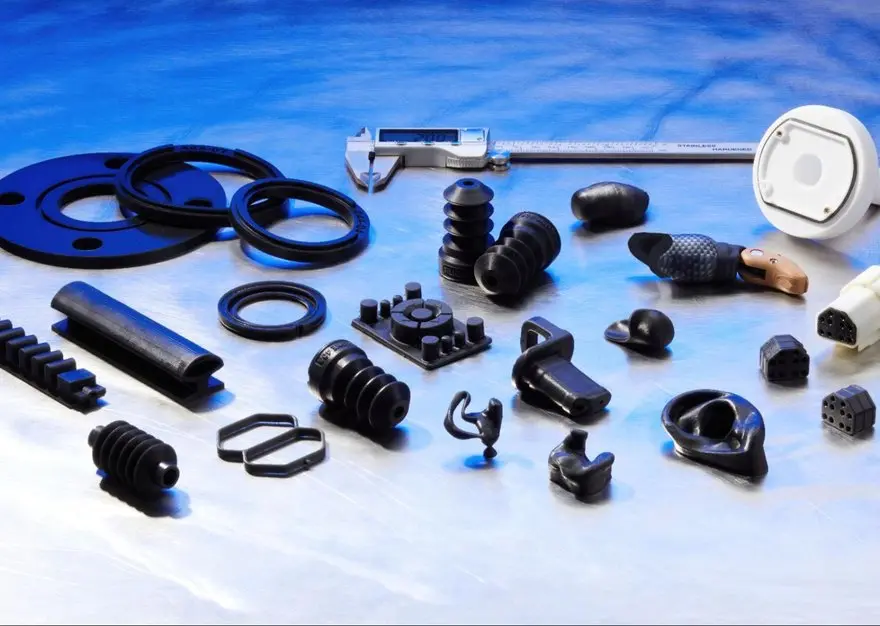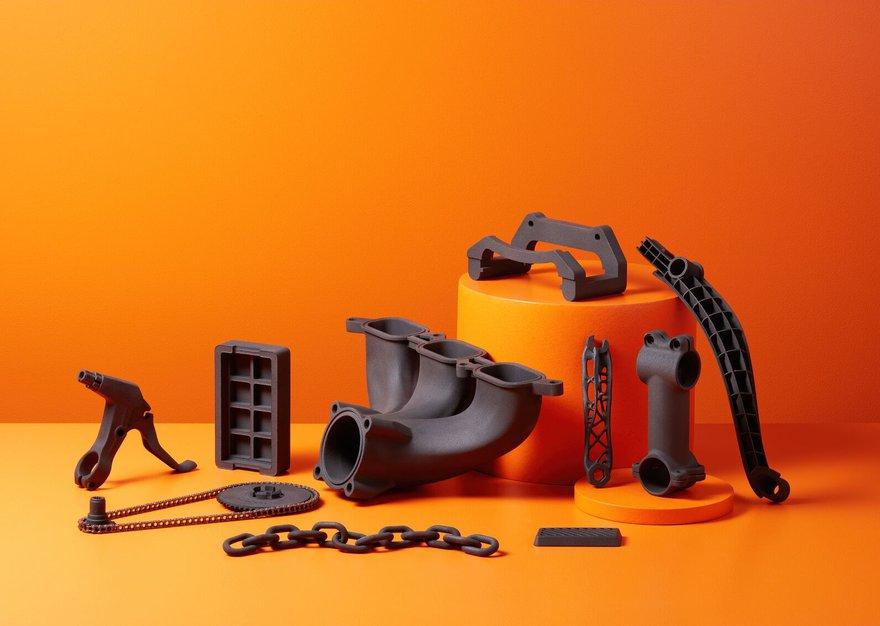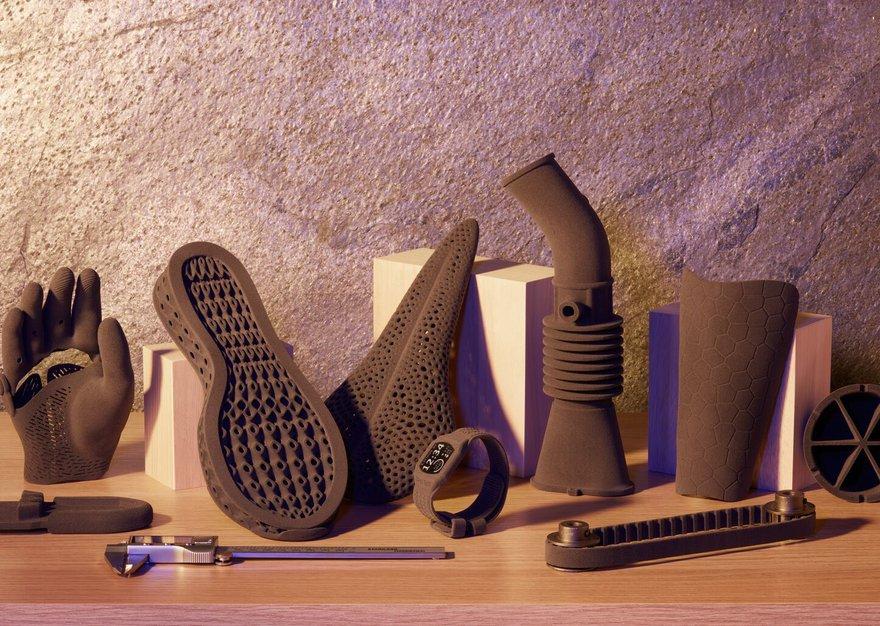Introducing Polypropylene Powder: Lightweight, Ductile, and Chemically Resistant Material for SLS 3D Printing

Formlabs is proud to introduce Polypropylene Powder, a new material for the Fuse Series selective laser sintering (SLS) 3D printing ecosystem that enables highly ductile parts for prototyping as well as low-volume manufacturing.
Polypropylene (PP) parts are lightweight, watertight, and chemically resistant, making them ideal for end-use applications. Polypropylene Powder is a non-simulated, genuine thermoplastic polypropylene that doesn't require outsourcing to a service bureau, very expensive machines, or hours of endless tinkering with print settings. The Fuse Series workflow enables users to access affordable, industrial-quality, in-house polypropylene 3D printing for the first time.
With an elongation at break of 34% and a flexural modulus of 1327 MPa, Polypropylene Powder offers similar properties to common injection molded polypropylenes, and opens up opportunities for:
- Consumer goods such as packaging for liquid products, sporting equipment, and electronics
- Medical devices such as orthotics and prosthetics
- Automotive and industrial goods such as fluid systems, enclosures, tooling, and manufacturing aids
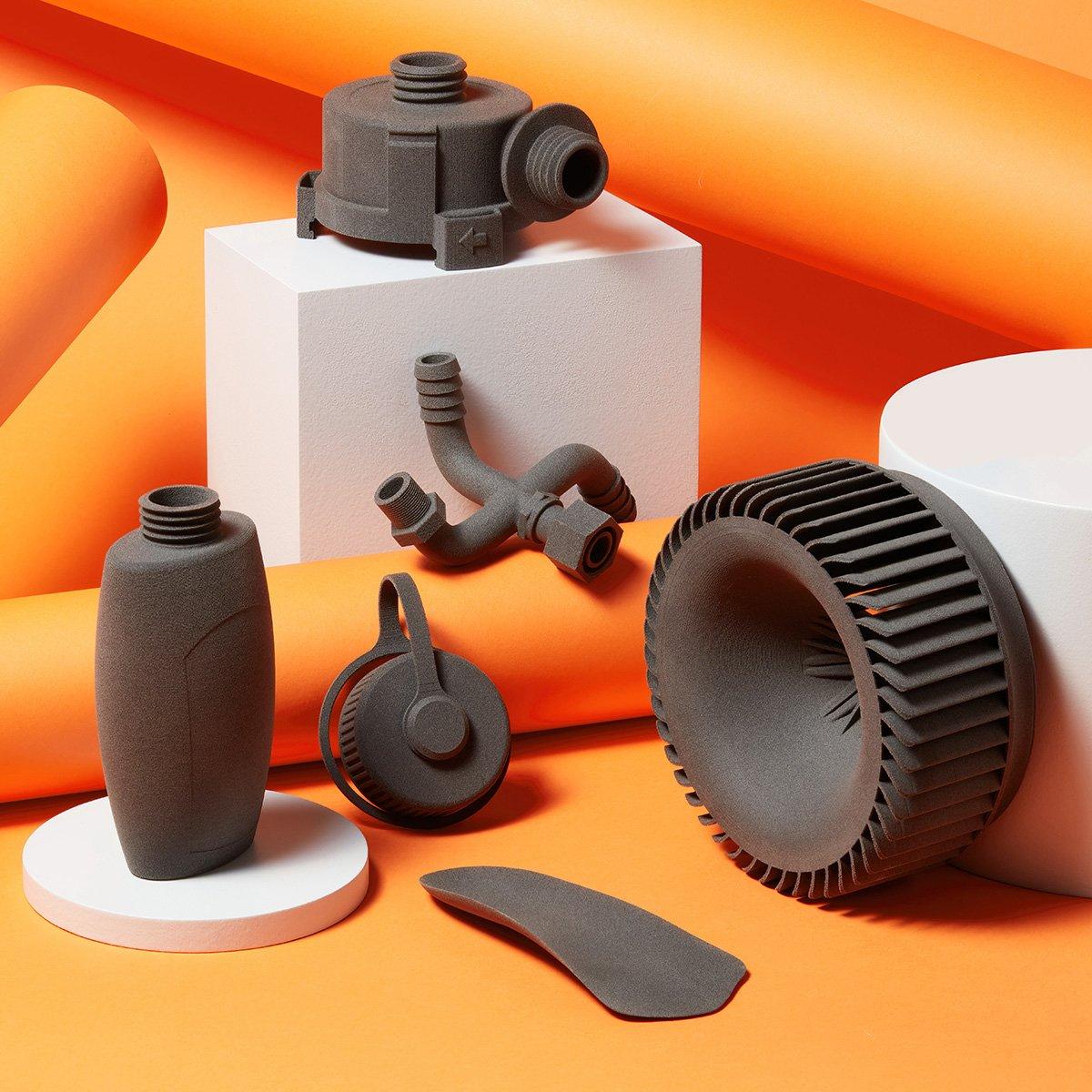
Introducing Polypropylene Powder for the Fuse Series
Watch our webinar to learn how Polypropylene Powder enables highly ductile parts for prototyping as well as manufacturing.
Why 3D Print Polypropylene?
There are currently many ways to fabricate polypropylene (PP) parts. The most common is to injection mold, thermoform, blow mold, or form them through other traditional processes involving tooling. Though these workflows are cost-effective for goods produced in high quantities, they present geometric limitations inherent to molding and high upfront costs for tooling, which eliminates the possibility of cost-effective customized or low-volume goods.
There are also polypropylene 3D printing options available, with filaments for fused deposition modeling (FDM) printers, stereolithography (SLA) resins that simulate polypropylene material properties, and polypropylene powders available on higher-priced SLS systems.
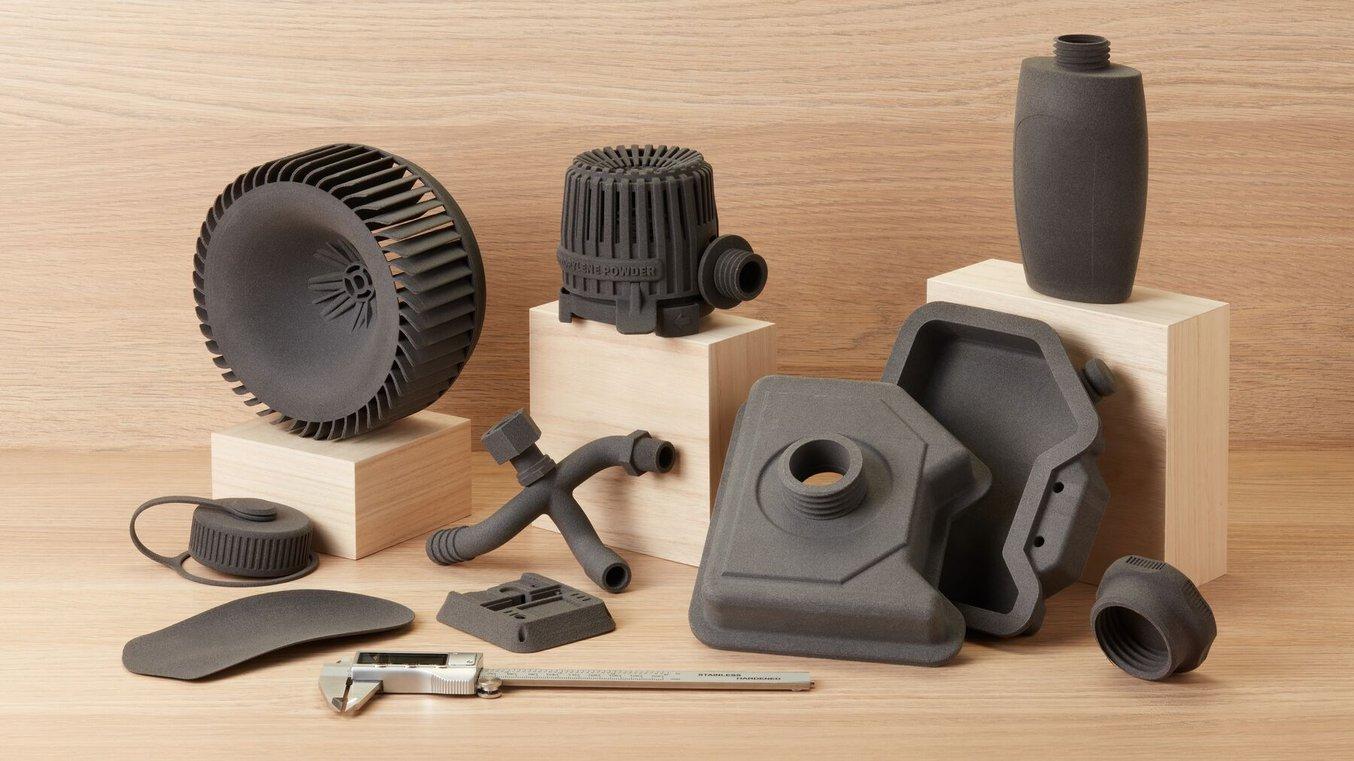
Polypropylene Powder for the Fuse Series ecosystem combines the familiar properties of an industry-standard material with the geometric freedom, supply chain agility, and rapid iterative power of in-house SLS 3D printing.
The Formlabs Fuse Series is the first industrial-grade powder bed fusion 3D printing system that can offer high-performance, genuine polypropylene parts made without design constraints at an affordable price and through an easy-to-use workflow. For the first time, businesses can affordably gain control over their end-to-end design and production with the same material, and make their supply chain more resilient with a polypropylene bridge manufacturing option. Introducing materials that are new to the Fuse Series, but familiar to the industry, is the most powerful way we can enable innovation and encourage new workflows across every discipline.
With its high elongation at break, Polypropylene Powder enables the creation of high-performance end-use parts boasting high resistance to a wide range of chemicals, good tensile strength, and low moisture absorption. These qualities make it an excellent choice for manufacturing durable end-use parts engineered for demanding applications that prioritize high ductility for lightweight parts.
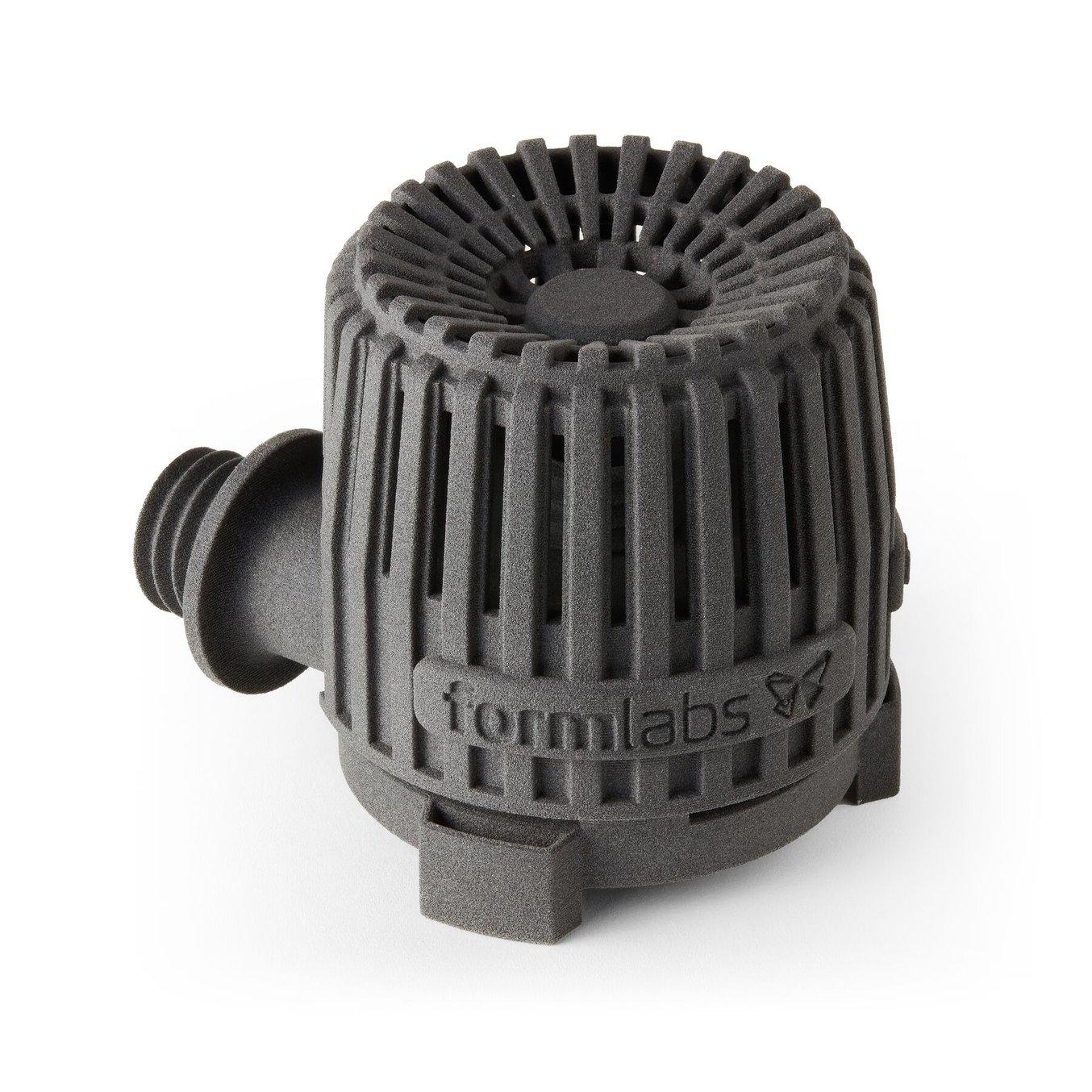
Request a Free Sample Part
See and feel Formlabs quality firsthand. We’ll ship a free sample part printed in Polypropylene Powder to your office.
3D Printed PP Powder Mechanical Properties
| Polypropylene Powder | Nylon 11 Powder | Nylon 12 Powder | |
|---|---|---|---|
| Ultimate Tensile Strength (MPa) | 29 | 49 | 50 |
| Tensile Modulus (MPa) | 1640 | 1600 | 1850 |
| Elongation at Break (%) | 34 | 40 | 11 |
| Flexural Modulus (MPa) | 1327 | 1400 | 1600 |
| Heat Deflection Temperature @ 0.45 MPa (°C) | 113 | 182 | 171 |
| Sintered Density (g/cm3) | 0.89 | 1.03 | 0.99 |
| Refresh Rate | 50% | 30% | 30% |
| Inert Nitrogen Atmosphere Needed? | No | Yes | No |
Determining Cost Per Part for PP Powder
Cost per part for SLS 3D printed parts is a multi-variable equation that can take into account powder cost, print time, packing density, and refresh rate — the ratio of new to used powder required for a new print.
In order to print most cost-effectively and fully utilize all their powder, users should try to pack their build chambers as tightly as possible — and aim to match their pack density to the refresh rate. With a pack density of 30%, the unsintered powder (70% of the build) can be recycled into the next build, which will have 30% fresh powder and 70% recycled.
Polypropylene Powder has a 50% refresh rate, meaning each new build should be made up of half recycled and half fresh powder, slightly higher than other Formlabs SLS powders. However, it has a significantly lower sintered density and costs less per kilogram. Parts of the same volume will require less powder than they would in Nylon 12 Powder builds, so powder purchases go further, while the material is also more affordable.
Despite higher refresh rates, Polypropylene Powder is a cost-effective solution for users looking to combine the benefits of an industry-standard material with the design freedom, agility, and speed advantages of 3D printing. Additionally, users can adjust their refresh rate to optimize for part quality and surface finish (higher refresh rate) or cost per part (lower refresh rate).
What Can Polypropylene 3D Printing on the Fuse Series Do?
Polypropylene plastic is the second most widely used plastic in our everyday lives. It’s used for a wide range of applications, from consumer goods packaging to automotive components, sporting equipment, home appliances, and more. On the Fuse 1+ 30W, Polypropylene Powder creates parts that combine the familiar properties of this popular polymer with the design freedom and accessibility of SLS 3D printing.
Rapid Prototyping
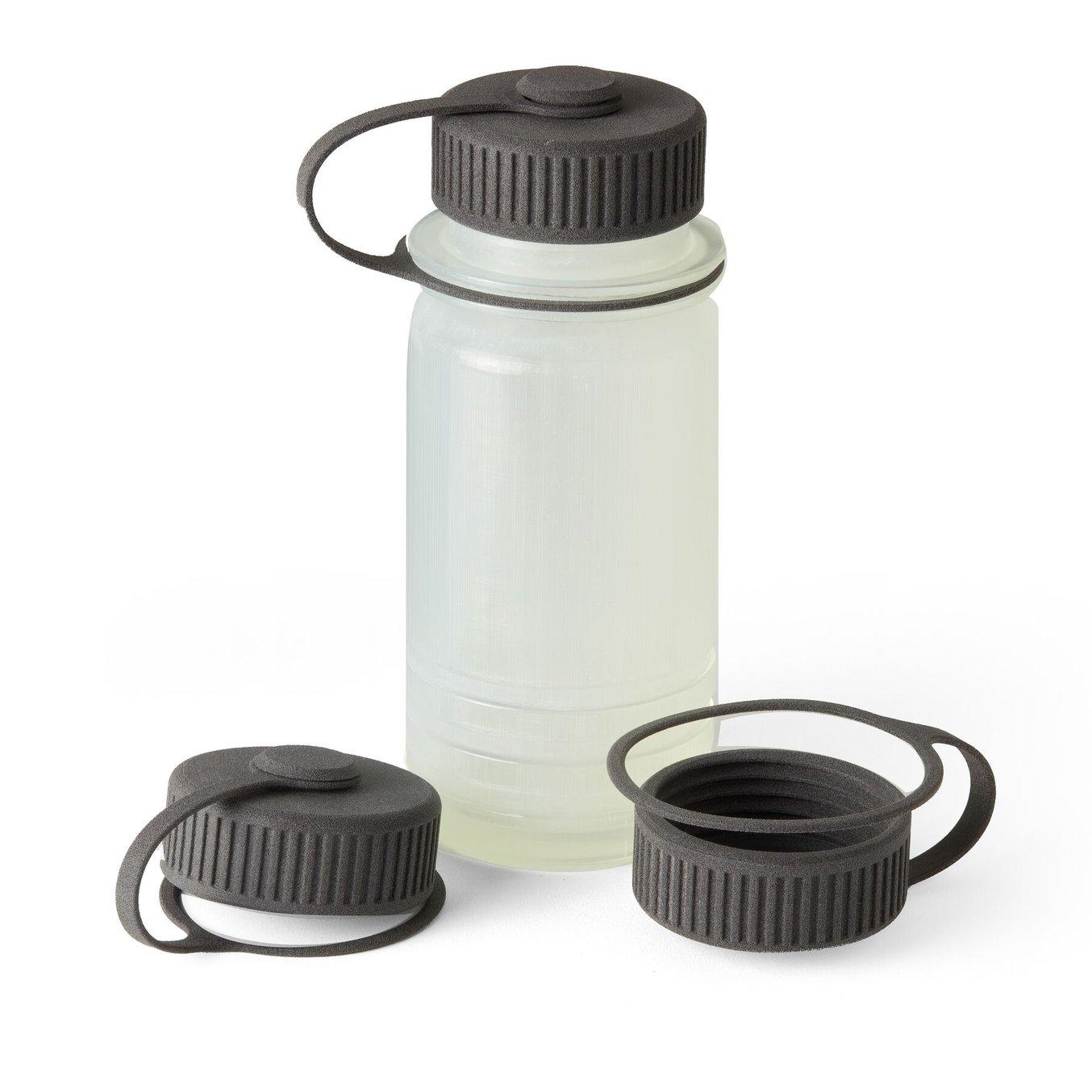
Polypropylene Powder's lightweight, low moisture absorption, and ductility make it ideal for prototyping this print-in-place flexible loop and cap.
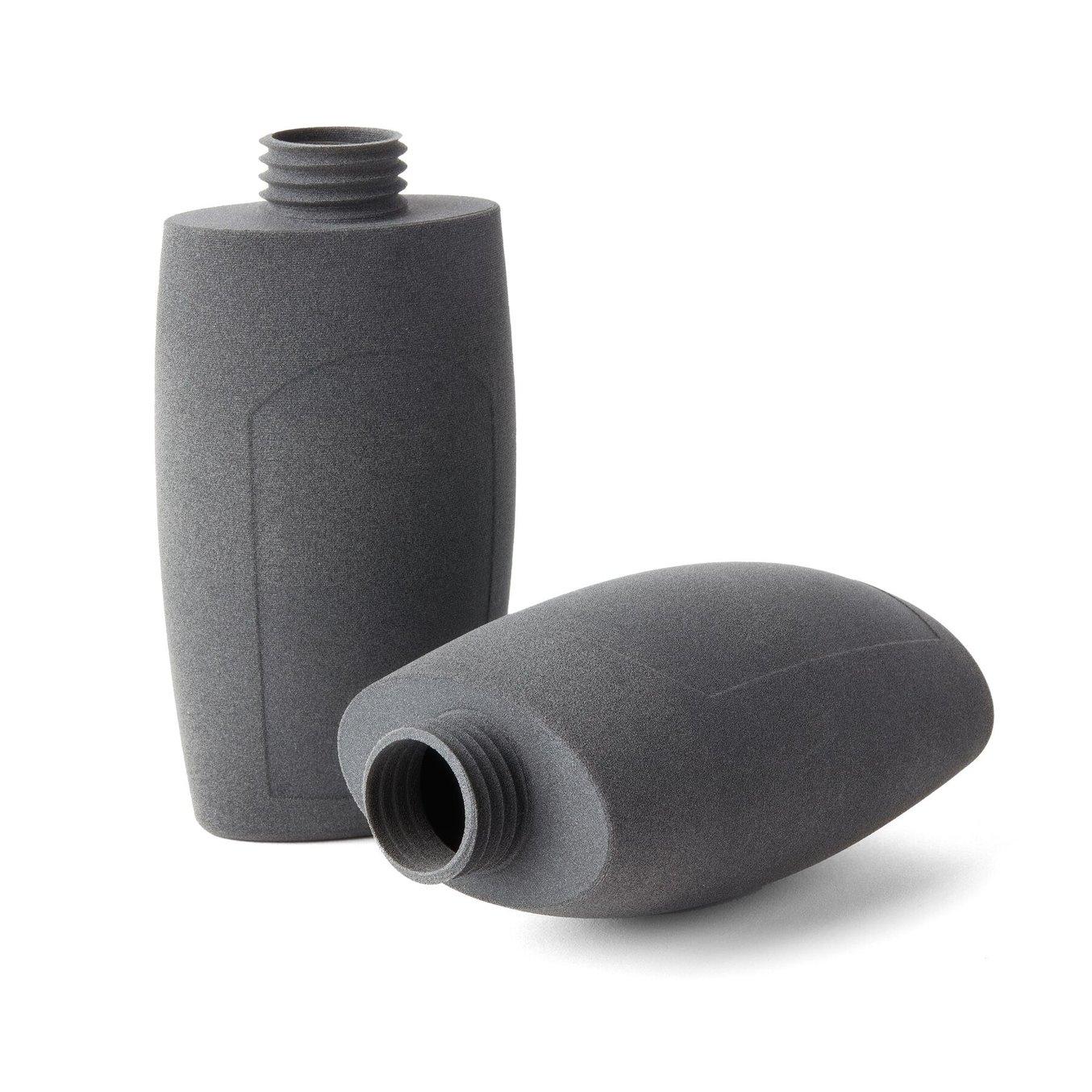
Prototyping this shampoo bottle with adaptive thickness for rigid and flexible sections is easy with in-house SLS and Polypropylene Powder.
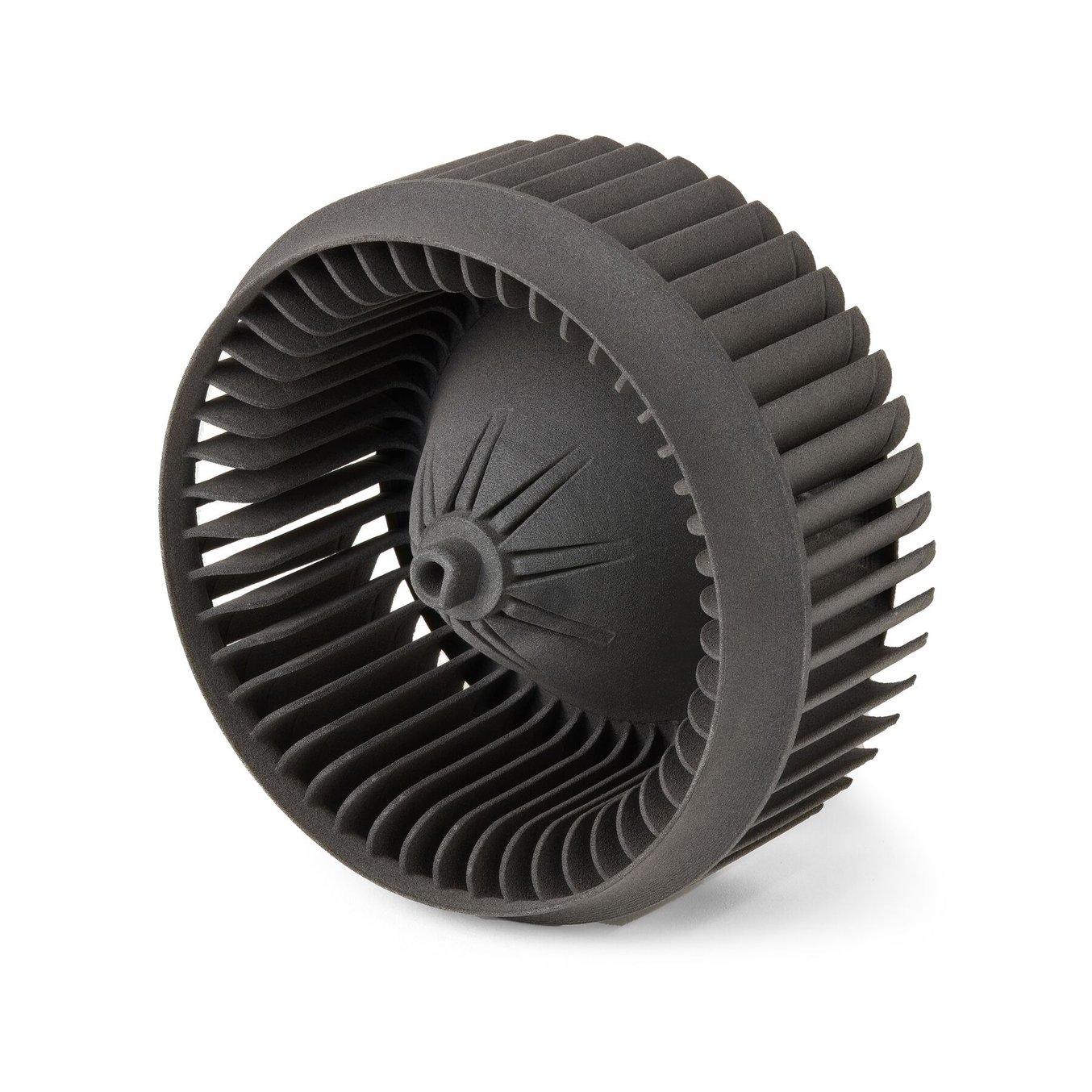
PP Powder makes it easier to iterate different geometries and test fan blade parameters for this HVAC blower part.
The Fuse 1+ 30W printer and Polypropylene Powder empower product designers and engineers to design, test, and iterate in-house with the same material they’ll be using for their end product. Without having to outsource to service bureaus, they can reduce development time from weeks to 24 hours or less and increase their iterative speed to optimize their product.
Polypropylene Powder’s low sintered density means that designers can prototype with the same weight considerations as the final product. Polypropylene Powder is watertight without added post-processing steps — so rapid prototyping of vessels, fittings, tubing, and other components that have to hold or transfer liquids can now be accomplished without extra labor for smoothing or coating.
Polypropylene Powder opens up an entirely new product class for SLS 3D printing and rapid prototyping, on the same trusted platform that has made the Fuse Series the best-selling SLS system in the world.
Manufacturing Aids and Tooling
Manufacturing aids represent the effort to adapt the needs of unique and ever-changing workflows to standardized machinery — because those workflows change as new products are developed, manufacturing aids are always short-term, if not completely unique. They represent a perfect 3D printing use case, and with Formlabs SLS ecosystem, they can be designed for rugged, industrial situations while still being cost-effective to produce as one-offs. Parts can even be welded to other polypropylene parts, expanding the possibilities for functional assemblies or add-ons to existing machines or manufacturing aids.
Polypropylene Powder expands the possibilities for manufacturing aids in a variety of disciplines. Its excellent chemical resistance and watertight properties make it invaluable for automotive, aerospace, and medical device manufacturing industries where fluids and chemicals are often present during production. Parts made from Polypropylene Powder are extremely ductile, and can handle repeated bending and flexing, making them ideal for strong, durable tooling.
End-Use Parts
The traditional mass-manufacturing workflows for polypropylene parts are reliable, cost-efficient, and readily available. So why 3D print end-use products in Polypropylene Powder?
Being able to SLS 3D print polypropylene in-house helps manufacturers:
- Test new products without committing to expensive metal tooling
- Expand customization possibilities
- Produce polypropylene parts in low volumes cost-effectively
- Gain control over their supply chain
- Insulate themselves from material shortages or supplier changes
- Design freedom: lattice structures and complex shapes are simple to 3D print, and designers can completely reimagine how their products will look, feel, and behave.
Though the supply chain looks different with SLS 3D printing, the material is familiar. With Polypropylene Powder on the Fuse Series, there’s no need to compromise part performance — the parts will be polypropylene, simply fabricated in-house in days rather than outsourced for weeks.
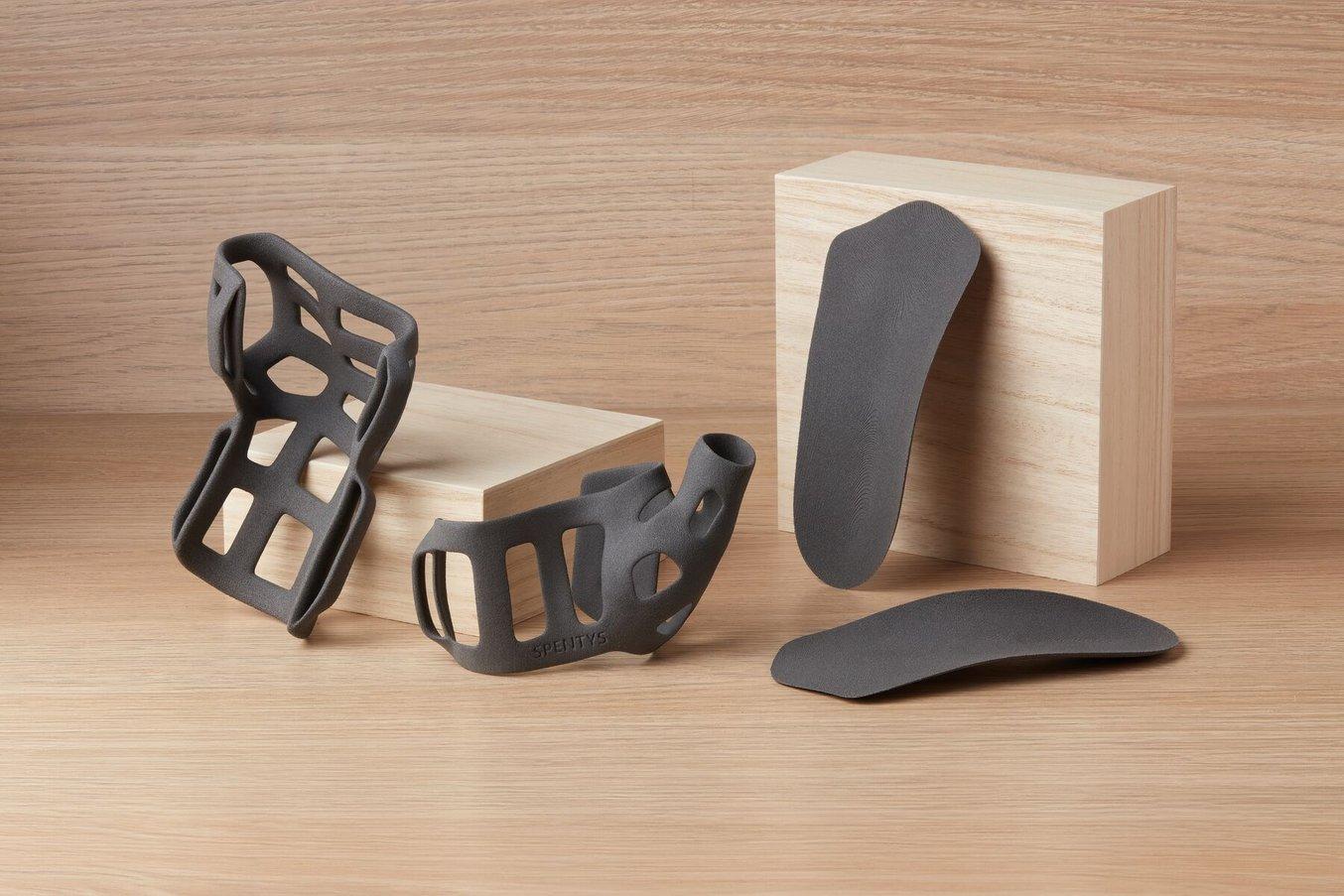
SLS 3D printing end-use medical devices, like these ergonomic thumb braces and orthotic insoles, in Polypropylene Powder takes advantage of the material's high ductility and low moisture absorption.
For medical devices, polypropylene is already a well-recognized and relied upon material — being able to SLS 3D print it with confidence can open up new product categories and customization possibilities for medical device companies. For skin-safe* devices such as wearables, Polypropylene Powder will be an excellent prototyping or low-volume production solution.
*Biocompatibility certification for Polypropylene Powder is ongoing at the time of product announcement. Once the material is certified, it is expected to enable even more opportunities for medical device testing and production.
How To 3D Print With Polypropylene Powder
Polypropylene Powder is easily integrated into the Fuse 1+ 30W SLS workflow. Using a dedicated Build Chamber and a Fuse Depowdering Kit for part extraction, the Fuse ecosystem can be changed over to a new material in under 1 hour.
Polypropylene Powder prints in an air atmosphere in Fuse, making it easier than ever to create highly ductile parts with SLS 3D printing.
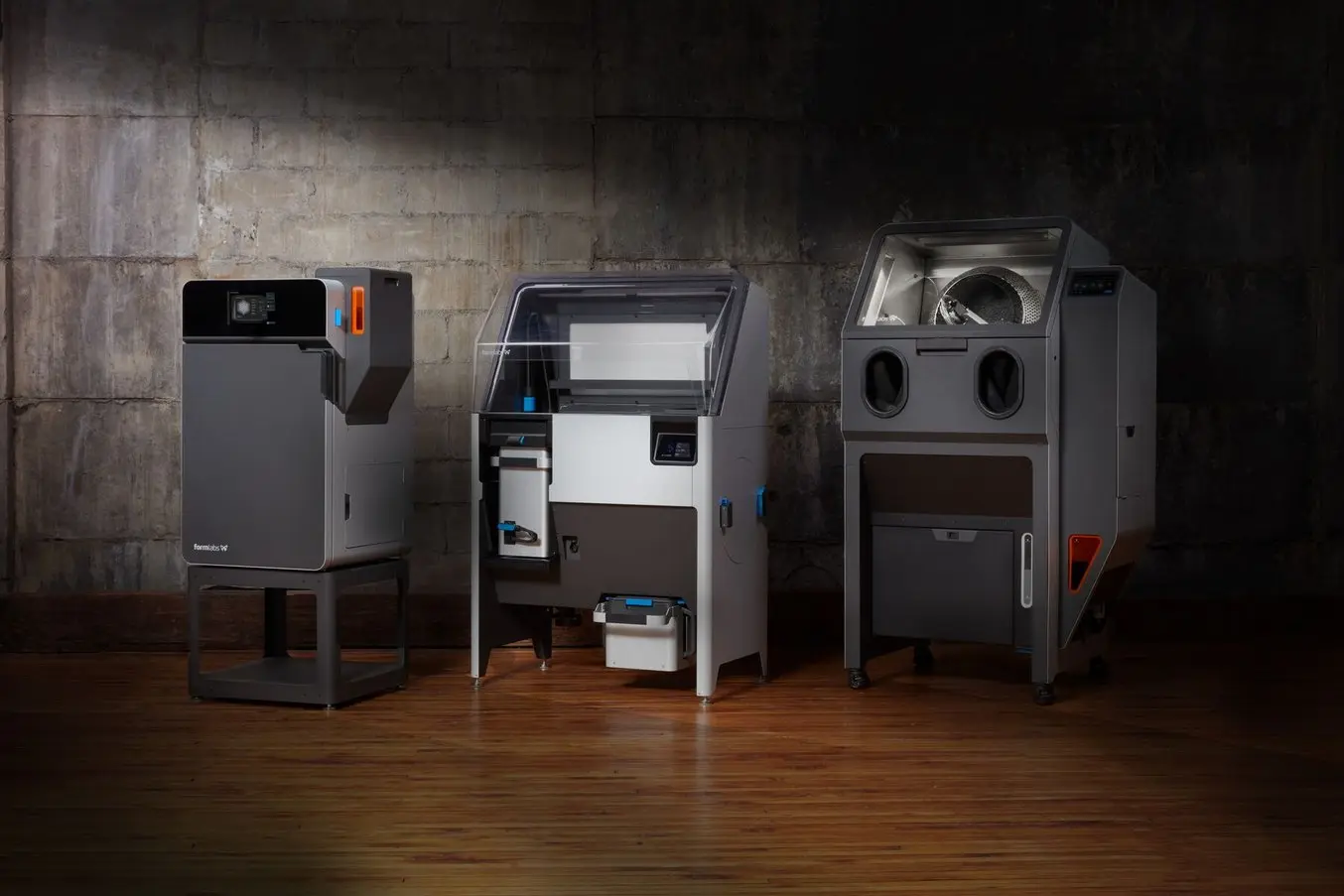
The Fuse Series ecosystem, made up of the Fuse 1+ 30W, Fuse Sift, and Fuse Blast, facilitates switching materials for users looking to try out a new SLS powder — a unique feature among powder bed fusion 3D printers.
With its low density, this material enables the production of more parts per kilogram, delivering cost-effective, ductile parts with a streamlined workflow. The appearance of parts can be further improved by post-processing in the Fuse Blast — Formlabs automated media blaster — to deliver clean-to-the-touch parts with a professional polish. Together, the Fuse 1+ 30W, Fuse Sift, and Fuse Blast complete the SLS workflow at an affordable price.
Familiar Material, Proven SLS Workflow
Polypropylene Powder brings one of the most widely-used plastics in the world to your in-house workflow, without the need for long lead times, high tooling costs, or predictable quantities.
For prototypes that can be tested in their intended environment to end-use products made cost-effectively in low quantities, the Fuse Series ecosystem and this new powder are helping designers, engineers, and manufacturers gain control over their development and production cycles.
Watch our webinar to learn more about 3D printing with polypropylene (PP). To test the chemical resistance, elongation at break, low density, or to see the genuine polypropylene for yourself, request a free 3D printed sample.

